
The wails, the babble of words, the murmuring of the crowd suddenly stopped as two young men appeared. They stepped past the body, approached a town marshal who stood close by, and offered to surrender. They had killed this man, one of them declared, and now they expected their reward. The lawman looked at them in astonishment. “My God,” he said, “do you mean to tell us that this is Jesse James?”
“Yes,” the pair replied in unison.
“Those who were standing near,” the reporter wrote, “drew in their breaths in silence at the thought of being so near Jesse James, even if he was dead.”
Robin Hood or Hooded Bandit?
Jesse James was not an inarticulate avenger for the poor; his popularity was driven by politics—politics based on wartime allegiances—and was rooted among former Confederates. Even his attacks on unpopular economic targets, the banks and the railroads, turn out on closer inspection to have had political resonances. He was, in fact, a major force in the attempt to create a Confederate identity for Missouri, a cultural and political offensive waged by the defeated rebels to undo the triumph of the Radical Republicans in the Civil War. His robberies, his murders, his letters to the newspapers, and his starring role in ex-Shelby Brigade cavalry Officer John N. Edwards’s Kansas City Times columns all played a part in the Confederate effort to achieve wartime goals by political means (to use historian Christopher Phillips’s neat reversal of Clausewitz’s dictum). Had Jesse James existed a century later, he would have been called a terrorist.
This story is from the April 2020 edition of True West.
Start your 7-day Magzter GOLD free trial to access thousands of curated premium stories, and 9,000+ magazines and newspapers.
Already a subscriber ? Sign In
This story is from the April 2020 edition of True West.
Start your 7-day Magzter GOLD free trial to access thousands of curated premium stories, and 9,000+ magazines and newspapers.
Already a subscriber? Sign In
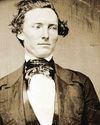
FIREARMS COLT WALKER 47
THE LEGENDARY HANDGUN THAT REALLY WON THE WEST
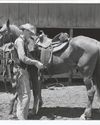
HERITAGE TRAVE
THE AMERICAN WEST IN ALL ITS GLORY OUR ANNUAL FAVORITES LIST CELEBRATES DESTINATIONS ACROSS THE WESTERN UNITED STATES.

Wild Turkey, and Not the Drinkin' Kind
The actual bird was a favorite of pioneers.

THE PASSION PROJECTS OF THE MODERN WESTERN
A YEAR OF UNDERRATED EXCELLENCE
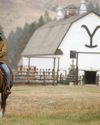
WESTERN BOOKS THEN AND NOW
THE STATE OF WESTERN HISTORY AND FICTION PUBLISHING IN 2024 IS ONE OF GRIT AND DETERMINATION.
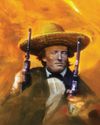
SAMUEL WALKER VALIANT WARRIOR
While a prisoner at the castle of Perote, Walker was put to work raising a flagpole. At the bottom of the hole, Walker placed a Yankee dime, vowing to someday come back and retrieve it, at the same time exacting revenge on his Mexican captors. In the summer of 1847, when Walker's mounted riflemen returned and routed Santa Anna's guerillas, the young captain kept his promise and got his dime back.
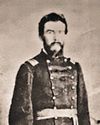
THE BATTLE OF CENTRALIA
ON September 27, 1864, Bloody Bill Anderson and about 80 men took over the small railroad village of Centralia, looting stores and discovering a barrel of whiskey that they hauled out into the street. Wild enough when sober, they soon were roaring drunk.
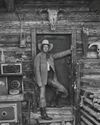
THE MAN WHO SHOOTS THE WEST
Jay Dusard is a living American photographer who has made Arizona his home for over 60 years, seeing it first in 1960 on a visit, moving here for good in 1963.
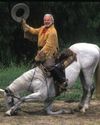
A TRUE WESTERNER INDEED PHIL SPANGENBERGER 1940-2024
Spangenberger had Nevada trained to bow by the legendary horse trainer, Glenn Randall, who trained Roy Rogers' Trigger, Gene Autry's Champion, Rex Allen's Koko and the Ben Hur chariot horses, among other great equines.

Where Did the Loot Go? - This is one of those find the money stories. And it's one that has attracted treasure hunters for more than 150 years.
Whatever happened to the $97,000 from the Reno Gang's last heist? Up to a dozen members of the Reno Gang stopped a Jeffersonville, Madison and Indianapolis train at a watering station in southern Indiana. The outlaws had prior intelligence about its main load: express car safes held about $97,000 in government bonds and notes. In the process of the job, one of the crew was killed and two others hurt. The gang made a clean getaway with the loot.